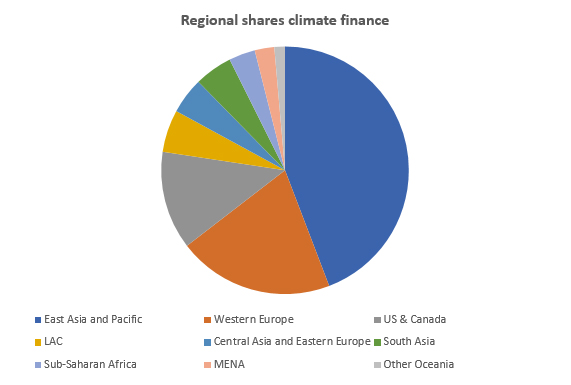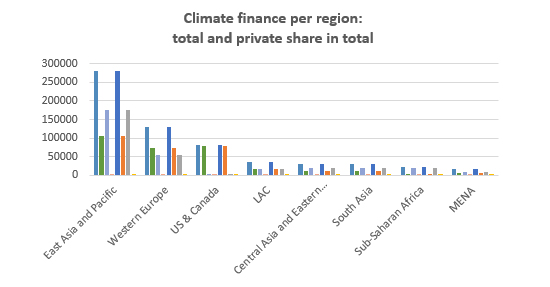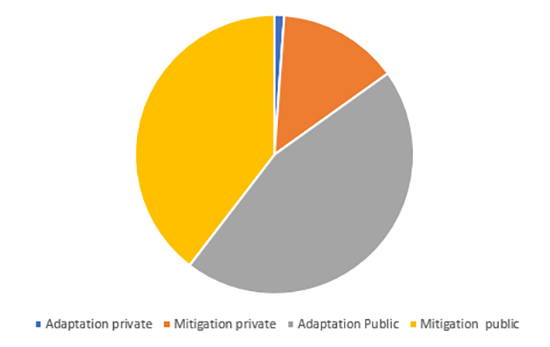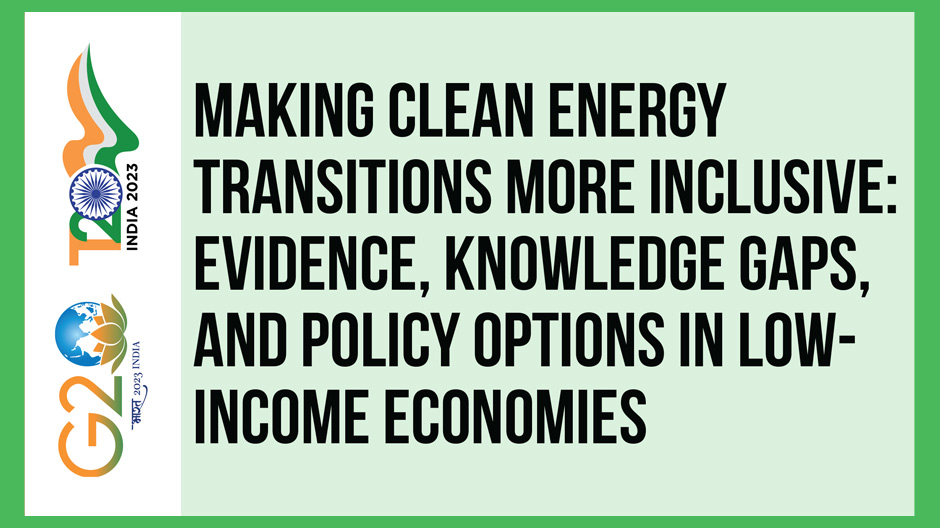Task Force 4: Refuelling Growth—Clean Energy and Green Transitions
Access to reliable renewable energy and energy efficiency can provide significant climate, development, and equity benefits. Transitions to clean energy are compatible with sustainable and equitable development, and women’s economic empowerment. However, in the absence of adequate policies, they may reinforce existing inequalities. This policy brief summarises the evidence that supports and knowledge gaps that hinder clean and inclusive energy transitions. It concludes that alongside addressing finance gaps and implementation barriers, tackling systemic socioeconomic inequalities is critical for inclusive clean energy transitions. The G20 is well positioned to facilitate the sharing of lessons on innovative practices in such transitions to make a positive impact on the lives of vulnerable populations.
1. The Challenge
Can energy transitions become the golden thread?
The world’s Sustainable Development Goals (SDG) commitments include the provision of universal access to affordable, reliable and modern energy services by 2030 (SDG 7.1). During the 2010s, there was significant progress, and the number of people without electricity declined from 1.2 billion in 2010 to 675 million in 2021.[1]
However, this progress has slowed. Even by 2030, 660 million people, mostly in sub-Saharan Africa, would remain without electricity. Between 2009 and 2019, the number of people in Africa without access to electricity actually grew by 30 million.[2] Moreover, progress on basic access masks a lack of progress on electricity reliability. At least another 2.8 billion people lack reliable electricity access. Insufficient monitoring and reporting on reliability make it nearly impossible to gauge high-level progress.[3]
Modern energy plays a critical role in social and economic well-being; this is why it has been called the “golden thread” that connects various development goals, such as poverty reduction, gender equality, health, and education.[4] Energy consumption and economic growth increase in tandem. Renewable energy has the potential to enhance agricultural productivity; for example, solar and wind energy can be used to power irrigation pumps.
Energy access and women’s empowerment often form a virtuous cycle. Empowerment increases the adoption of cleaner energy.[5] This can lower the drudgery of domestic work and shift women’s time towards education, [6] enhance access to information and help challenge the social norms that inculcate asymmetric care responsibilities. The disproportionate exposure of women and girls to polluting indoor smoke in cooking and the time they spend collecting fuel from forests is harmful and increasing in regions where forests are under pressure. Switching to clean cooking technologies can improve their lives and improve health.[7] Women’s businesses are more often small- and medium-sized enterprises (SMEs) and offer opportunities to drive both sustainability and gender equality outcomes.[8]
However, energy interventions and technologies have not delivered these successes at anything close to the scale that is required. Research has identified three sets of factors hindering this golden thread.[9]
Financing gaps: While investments in energy transitions and technologies have seen steady growth, this growth does not match the needs for the SDGs or UNFCCC commitments.[a],[10] COVID-19, growing public debt, increasing interest rates and the Russia–Ukraine war have further limited investments. The amount of clean energy investment flowing into developing countries actually fell between 2010 and 2021, from US$11.9 billion to US$10.8 billion. Climate finance is focused on mitigation, rather than funding critical adaptation needs.
The agreement to mobilise US$100 billion annually to support developing countries mitigate and adapt to climate change (enshrined in Article 9 of the 2015 Paris Agreement) was not achieved, with investments reaching just US$83.3 billion in 2020. Actual climate investment requirements to reach climate goals are far higher.[11] The Sharm el-Sheikh Implementation Plan from COP27 noted that US$6 trillion is needed by 2030 to implement Nationally Determined Contributions (NDCs) of developing countries.[12]
The private sector remains largely absent from many of these markets.[13] Aggregate blended finance investments have totalled US$160 billion to date[b],[14] but have not increased since the 2017 high of over US$9 billion. Investors show a low appetite for investing in climate opportunities in emerging and low-income economies.[15] Expectations that Official Development Assistance (ODA), as a first-lost mechanism within transactions to crowd in development finance institutions (DFIs) and commercial capital, would result in sufficient private investment have not been met.
Climate investments remain highly concentrated geographically (Figure 1). The Middle East and Africa receive only two per cent of global investment; Latin America and the Caribbean receive four per cent.[16] Within these regions, the poorest and most fragile countries and areas receive the least investment. Less private finance is being mobilised (Figure 2) in low-income regions, especially for adaptation (Figure 3).
Figure 1: Regional shares climate finance

Source: Naran et al. 2022.
Figure 2: Climate finance per region: total and private share in total

Source: Naran et al. 2022.
Figure 3: Climate finance Africa: public and private, adaptation and mitigation

Source: Naran et al. 2022.
Implementation barriers: Political economy and institutional challenges too often continue to favour incumbent technologies and distribution systems.[17] Electrification that supports advanced energy services—beyond lighting, phone charging and consumption of information services—nearly always increases emissions.[18] Cheaper decentralised off-grid electricity solutions do not obviously increase productivity and development.[19] Questions remain about whether affordable options and interventions like rudimentary energy technologies (e.g., simple improved cook stoves) consistently improve health outcomes.[20]
Experience shows that poorer and rural households often take up new electricity connections slowly because of high connection fees and rates, low reliability, inaccessible grid infrastructure and unsuitability or cost of home upgrades that are needed to enable connections. Once poor households are connected, they often consume relatively low amounts of electricity. It remains unclear whether off-grid solar solutions can sustainably and affordably deliver the services that people most need.
On the producer side, micro-enterprises, particularly in rural areas, and women-owned businesses, are hampered by other barriers, especially poor market access.[21] Access to renewable energy must be accompanied by low-carbon skills training and market development.[22]
Inequalities: Energy transitions have considerable potential to promote women’s economic empowerment when they are intentionally designed and implemented to do so. But they risk deepening gender and other social inequities when they are not, particularly in the energy sector that has deep gender biases. Development agencies have targeted women and girls in their gendered roles as unpaid household caretakers and energy consumers, endeavouring to promote a switch from gathering and using unsustainable fuelwood and charcoal for home cooking, to safer, cleaner alternatives.
Besides the impacts of energy consumption on household work, what about impacts on women’s labour market participation, access to decent paid work and access to skill? In these dimensions, development agencies have been less innovative with a few important exceptions.[23] By and large, women are pigeon-holed as consumers, and not empowered as producers, let alone climate leaders. In the context of COVID-19 recovery, multilateral institutions have highlighted the need for economic stimulus spending to be both green and socially inclusive,[24] but gender and low-carbon ambitions have rarely been connected systematically, despite obvious interdependencies.[25]
2. The G20’s Role
The G20 has a key role to play in supporting the golden thread that links sustainable energy transition to development and climate goals. This role is crucial both for urgently accelerating decarbonisation in industrialised countries and supporting a broader transition in contexts where access to modern energy remains low. Despite potentials for renewable energy to support the latter, the inevitable conclusion from several reviews is that these potentials are far from universally materialising,[26] due in large part to the barriers identified above.
National governments, including G20 members, are beginning to say more about gender in climate action. Governments have been engaged in updating their national climate plans and their NDCs to the UNFCCC. Approximately twice as many NDCs mention women or gender compared to the first round of NDCs in 2015.[27] However, most mentions remain superficial and pertain to climate change impacts and vulnerabilities, neglecting women’s role in climate action, and often perpetuating the narrative of women as victims, rather than as agents of change.[28]
A small handful of governments, such as Antigua and Barbuda, Nepal, and the Republic of the Marshall Islands, are on the leading edge of expressing integrated visions of gender equality, social inclusion and climate action. However, they need significant external resources to realise their visions. Other governments should follow the leads of these pioneering countries, and the G20 can support the sharing of lessons.
Many countries’ NDCs have identified renewable energy and improved energy efficiency as top priorities for advancing sustainability. Transformation along these lines is underway; energy efficiency typically makes environmental as well as economic sense, and for power generation, renewables are in many geographies cost-competitive with, or cheaper than, carbon-intensive technology.[29]
While the focus on low-carbon transition presents new opportunities, there is a need to acknowledge that primary insistence on mitigating emissions without properly recognising affordability, development and employment needs as well as gender and other inequalities, risks exacerbating an already deeply unequal global energy situation. Energy poverty and marginalisation are well known to prevent the adoption of clean energy, thereby creating a vicious circle.[30] Sustained attention to improving outcomes for women, youth, marginalised groups, and other disenfranchised populations is essential.
Investment programmes by G20 members and in lower-income economies must start by recognising these inequalities, including women’s lack of access to skills training and other enablers of employment in the energy sector. It will take dedicated effort to address inequitable norms and structures that disadvantage women and ensure that they are enabled to become full participants in the transition.
3. Recommendations to the G20
Our reviews have identified the following priorities for the G20 and its members.
Finance: The world needs a renewed effort to finance energy transitions while ensuring these do not crowd out adaptation finance. It needs to connect international financial resources from public, private and philanthropic sources in innovative ways to scale low-carbon technologies and business models as well as the mass mobilisation of private capital. NDCs need to be aligned with the realities of climate investment instruments and institutions. Domestic finance is critical as countries expand the use of green taxonomies and look for finance beyond international and public sector sources.[31]
Implementation: In many contexts, policies and innovation are key to achieving NDC and energy-access targets. The G20 is well positioned to promote lesson learning on policy innovations, and in promoting replication and extension of existing good practices, such as supporting Global South-led innovations, across diverse geographies. Key areas of policy innovation include financial instruments and strategies for channelling investments towards supporting energy transition in regions with low energy access, as well as towards SMEs, specifically women-owned SMEs.
Integrating equity: Addressing energy access for the world’s poorest needs requires renewed attention, and this needs to go beyond access that only fulfils basic needs.[32] Investments and policies for renewable energy and energy-efficiency in low-income countries should be intentionally designed for the empowerment of marginalised groups across energy value chains, such as in the example in Box 1.
- Addressing gender bias requires seeing women not merely as energy consumers but also as having roles along the energy value chain as producers, managers, traders and marketers.
- There is a specific policy role for engendering more equitable social norms (e.g., through public service communication) and supporting skills training (in science, technology and engineering) and mentorship for women and girls.
- Such interventions can be further supported through gender-responsive programmes in communities and schools, which promote intra-community and intra-household dialogues to enhance support for women’s advancement and economic empowerment in the sector.
The G20 is uniquely positioned to support iterative learning about effective practices in diverse contexts, informing good practices across varied settings.
| Box 1: Women’s leadership in green transitions
An example of what can go right when women’s economic empowerment and leadership are incorporated along the energy value chain is the Energising Development Programme (EnDev) in Tanzania.[33] This programme turns on its head the common notions that women belong in the kitchen, and instead targeted women as clean cook stove producers, traders and salespeople—as well as buyers and users. Women artisans were trained to craft improved cookstoves and engage customers. EnDev helped profile female role models to motivate other women, identified high-performing women who were willing to mentor young women, and involved husbands in discussing the business. Women’s labour market participation increased through the programme, their levels of secure income were bolstered, and they gained new skills. Women and men reported that women’s standing and prestige in the household increased. Husbands, who were proud of their successful wives’ accomplishments, advised younger husbands to “stand behind” their entrepreneurial spouses and stated their beliefs that their wives holding leadership positions benefitted the entire family. |
Priorities for research and learning: Contextual factors and complementary conditions play an important role in the success of energy transition initiatives. The G20 can promote policy-oriented learning for this purpose through the establishment and support of a permanent platform. A platform of this nature could coordinate the substantial opportunities available for investing in evidence generation, which in turn promotes inclusive green transitions, defines the concept of a “just transition” locally, facilitates the sharing of lessons from innovative pilots and practices, and promotes cross-sector action required for this transition.
Besides documenting and elevating successes, it is critical to truly understand these successes and the challenges in achieving inclusive clean energy transitions.[34] Barriers exist at various levels, which is one reason why the T20 can play a critical role in helping to address them.
To this end, research needs to include:
- Improving the quality and availability of data that allows tracking of the inclusiveness of energy interventions. What is not known cannot be improved.
- Clarifying causal relationships between low-carbon solutions to energy access, reliability and a variety of development outcomes across a range of contexts and for different population segments, including the poorest and most vulnerable populations. Such research should consider trade-offs between efficiency and equity, and the role of complementary investments and policies such as social protection.
- Comprehensively evaluating energy-sector policies and interventions that are meant to empower women and other marginalised groups. Impacts on the well-being, agency and opportunity of target groups all along diverse energy-sector value chains must be tracked to identify with sufficient nuance what works and in which contexts. Spillovers, both positive and negative, to other population segments should be documented.
- Identifying way for governments to work alongside the private sector to promote better access to productive resources, including finance, sustainable energy, entrepreneurial capacity and business development services, thereby supporting women- and youth-owned and led energy businesses, especially in poor and remote geographies, and addressing the most pressing needs of marginalised groups.
Research on these topics requires an applied, multi-disciplinary approach that is grounded in specific contexts. After all, the factors impeding inclusive low-carbon transitions are context-specific and have economic, social-cultural and political elements.
Attribution: Arjan de Haan et al., “Making Clean Energy Transitions More Inclusive: Evidence, Knowledge Gaps, and Policy Options in Low-Income Economies,” T20 Policy Brief, July 2023.
Endnotes
[a] Data show a decline in climate blended finance globally, from US$36.5 billion in 2016–2018 to US$14 billion in 2019–2021 (Toronto: Convergence 2022).
[b] Quantifying public and private flows of climate finance to LMICs is challenging, given a lack of standardised definitions and accounting methodologies
[1] Energy Sector Managamen Assistance Program, Tracking SDG 7 The Energy Progress Report, ESMAP, 2023, https://trackingsdg7.esmap.org/downloads.
[2] United Nations, Leveraging Energy Action for Advancing the Sustainable Development Goals, UN, 2021, https://sdgs.un.org/sites/default/files/2021-06/2021-SDG7%20POLICY%20BRIEFS.pdf; Convergence, State of Blended Finance, Toronto, Convergence, 2022, https://www.convergence.finance/resource/state-of-blended-finance-2022/view; Internatioal Renewable Agency, World Energy Transitions Outlook 2022, IRENA, 2022, https://www.irena.org/Digital-Report/World-Energy-Transitions-Outlook-2022; Internatioal Renewable Agency and African Development Bank, Renewable Energy Market Analysis: Africa and Its Regions, Abu Dhabi and Abidjan, IRENA and AfDB, 2022, https://www.irena.org/publications/2022/Jan/Renewable-Energy-Market-Analysis-Africa.
[3] Global Energy Alliance for People and Planete, The Global Challenge, GEAPP 2022, https://www.energyalliance.org/the-global-challenge/.
[4] Marc Jeuland et al., “Is Energy the Golden Thread? A Systematic Review of the Impacts of Modern and Traditional Energy Use in Low-and Middle-income Countries,” Renewable and Sustainable Energy Reviews 135, (January 2021): 110406.
[5] Joy Clancy et al., “Gender Equity in Access to and Benefits from Modern Energy and Improved Energy Technologies: World Development Report Background Paper,” Gender and Energy WDR Background Paper 44, (January 2012); Robert Jensen and Emily Oster, “The Power of TV: Cable Television and Women’s Status in India,” The Quarterly Journal of Economics 124, no. 3 (August 2009): 1057–1094.
[6] Mairi Dupar and Elizabeth Tan, From Low Carbon Consumers to Climate Leaders: A Review of Women’s Role in Low-carbon Economic Transitions (Cape Town: Climate and Development Knowledge Network, 2023), https://glowprogramme.org/resource/low-carbon-consumers-climate-leaders; Ipsita Das et al., A Virtuous Cycle? Reviewing the Evidence on Women’s Empowerment and Energy Access, Frameworks, Metrics and Methods, Environment for Development, 2020), https://energyaccess.duke.edu/wp-content/uploads/2020/03/White-paper-on-gender-and-energy-access-1.pdf.
[7] Beulah Sarah James et al., ”Household Cooking Fuel Use and its Health Effects Among Rural Women in Southern India—A Cross-sectional Study,” PLoS ONE 15, no. 4 (April 2020):e0231757; Ning Zhang et al., “Improving Rural Women’s Health in China: Cooking with Clean Energy,” Environ Sci Pollut Res Int 29, (March 2022): 20906–20920; Bipasha Baruah, ”Creating Opportunities for Women in the Renewable Energy Sector: Findings from India,” Feminist Economics 21, no. 2 (January 2015): 1–24.
[8] International Finance Corporation, MSME Finance Gap, Washington D.C, IFC, 2017, https://www.smefinanceforum.org/sites/default/files/Data%20Sites%20downloads/MSME%20Report.pdf.
[9] Jeuland et al., “Is Energy”; Dupar, and Tan, “From Low Carbon”.
[10] Baysa Naran et al., Global Landscape of Climate Finance: A Decade of Data (Climate Policy Initiative , 2022), https://www.climatepolicyinitiative.org/publication/global-landscape-of-climate-finance-a-decade-of-data/.
[11] Organisation for Economic Co-operation and Development, Aggregate Trends of Climate Finance Provided and Mobilised by Developed Countries in 2013-2020, Paris, OECD, 2022, https://www.oecd.org/finance/aggregate-trends-of-climate-finance-provided-and-mobilised-by-developed-countries-in-2013-2020-d28f963c-en.htm
[12] United Nations Framework Convention on Climate Change, Sharm el-Sheikh Implementation Plan, Decision -/CP.27, UNFCC, 2022, https://unfccc.int/sites/default/files/resource/cop27_auv_2_cover%20decision.pdf
[13] ESMAP, Tracking SDG7.
[14] Convergence, State of Blended Finance Report 2021; Environment for Development, A Research Agenda for Low Carbon Transition and Gender Equity in the Global South: Mobilizing New Climate Investment Models, 2023, https://www.efdinitiative.org/programs/inclusive-green-transformations/initiatives/research-agenda-low-carbon-transitions-global; Robin Ivory, “Climate Financing: Beyond the 2022 State of Bended Finance,” Convergence, June 26, 2023, https://www.convergence.finance/news-and-events/news/2c0t0EaXBOk4OiRh4pKf8n/view.
[15] Convergence, State of Blended Finance.
[16] IRENA and AfDB, Renewable Energy.
[17] Churchill Agutu et al., “Accounting for Finance in Electrification Models for Sub-Saharan Africa,” Nature Energy 7, (June 2022): 1–11; Brian Sergi et al., “Institutional Influence on Power Sector Investments: A Case Study of On-and Off-grid Energy in Kenya and Tanzania,” Energy Research & Social Science 41, (April 2018): 59–70.
[18] Marc Jeuland et al., “Climate Implications of Electrification Projects in the Developing World: A Systematic Review,” Environmental Research Letters 15, no. 10 (October 2020): 103010.
[19] Jeuland et al., “Is Energy”
[20] Sambandam et al., “Can Currently Available Advanced Combustion Biomass Cook-stoves Provide Health Relevant Exposure Reductions? Results from Initial Assessment of Select Commercial Models in India,” EcoHealth 12, no. 1 (March 2015): 25–41.
[21] Jonathan Phillips et al., Catalysing Climate Finance for Low-carbon Agriculture Enterprises (Shell Foundation, 2022).
[22] Dupar and Tan, “From Low Carbon”; Ipsita Divedi, Emilie Tant, and Emily Subden, “8 Steps to Change Gender Norms for Women’s Economic Rights on International Women’s Day,” ALIGN, March 7, 2023), https://www.alignplatform.org/resources/illustration-8-steps-gender-norms-womens-economic-rights; Suwadu Sakho-Jimbira and Ibrahima Hathie, The Future of Agriculture in Sub-Saharan Africa, Southern Voice Policy Brief No. 2, 2020, https://www.ipar.sn/IMG/pdf/future-agriculture-africa-sakho-jimbira-hathie-2020.pdf.
[23] Dupar and Tan, “From Low Carbon”
[24] Vivid Economics and Finance for Biodiversity Initiative, Greenness of Stimulus Index, London, Vivid Economics and Finance for Biodiversity Initiative, 2021, https://www.vivideconomics.com/ casestudy/greenness-for-stimulus-index/.
[25] Kristalina Georgieva, Antoinette Sayeh, and Ratna Sahay, “How to Close Gender Gaps and Grow the Global Economy,” IMF Blog, September 8, 2022, https://www.imf.org/en/Blogs/Articles/2022/09/08/how-to-close-gender-gaps-and-grow-the-global-economy; John Bluedorn, et al., A Greener Labor Market: Employment, Policies, and Economic Transformation (IMF, 2022), https://www.elibrary.imf.org/display/book/9781616359423/CH003.xml is silent on gender.
[26] Jeuland et al., “Is Energy”; Dupar and Tan, “From Low Carbon”.
[27] Internation Union for Conservation of Nature, Gender and National Climate Planning: Gender Integration in the Revised Nationally Determined Contributions, Gland, IUCN, 2021, https://genderandenvironment.org/gender-and-ndcs-2021/.
[28] Dupar and Tan, “From Low Carbon”.
[29] United Nations Environment Program, Emissions Gap Report 2022: The Closing Window, Nairobi, UNEP, 2022, https://www.unep.org/resources/emissions-gap-report-2022; International Energy Agency, World Energy Outlook, Paris, IEA, 2021, https://www.iea.org/reports/world-energy-outlook-2021.
[30] Shonali Pachauri and Narasimha Rao, “Gender Impacts and Determinants of Energy Poverty: Are We Asking the Right Questions?,” Current Opinion in Environmental Sustainability 5, no. 2 (May 2013): 205–215.; Edwina Fingleton-Smith, “The Lights Are on But No (Men) Are Home. The Effect of Traditional Gender Roles on Perceptions of Energy in Kenya,” Energy Research & Social Science 40 (February 2018): 211–219.
[31] Stephanie Allan et al., The Role of Domestic Budgets in Financing Climate Change Adaptation, Oxford Policy Management Background Paper, 2019, https://gca.org/reports/the-role-of-domestic-budgets-in-financing-climate-change-adaptation/.
[32] Kirsten Jenkins et al., “Humanizing Sociotechnical Transitions Through Energy Justice: An Ethical Framework for Global Transformative Change,” Energy Policy 117 (March 2018): 66–74. ; Ipsita Das et al., “A Virtuous Cycle?”.
[33] Dupar and Tan, “From Low Carbon”
[34] Phillips et al., “Catalysing Climate”





